Blaž Fortuna
Human in the AI loop via xAI and Active Learning for Visual Inspection
Jul 17, 2023Abstract:Industrial revolutions have historically disrupted manufacturing by introducing automation into production. Increasing automation reshapes the role of the human worker. Advances in robotics and artificial intelligence open new frontiers of human-machine collaboration. Such collaboration can be realized considering two sub-fields of artificial intelligence: active learning and explainable artificial intelligence. Active learning aims to devise strategies that help obtain data that allows machine learning algorithms to learn better. On the other hand, explainable artificial intelligence aims to make the machine learning models intelligible to the human person. The present work first describes Industry 5.0, human-machine collaboration, and state-of-the-art regarding quality inspection, emphasizing visual inspection. Then it outlines how human-machine collaboration could be realized and enhanced in visual inspection. Finally, some of the results obtained in the EU H2020 STAR project regarding visual inspection are shared, considering artificial intelligence, human digital twins, and cybersecurity.
Robust Anomaly Map Assisted Multiple Defect Detection with Supervised Classification Techniques
Dec 19, 2022



Abstract:Industry 4.0 aims to optimize the manufacturing environment by leveraging new technological advances, such as new sensing capabilities and artificial intelligence. The DRAEM technique has shown state-of-the-art performance for unsupervised classification. The ability to create anomaly maps highlighting areas where defects probably lie can be leveraged to provide cues to supervised classification models and enhance their performance. Our research shows that the best performance is achieved when training a defect detection model by providing an image and the corresponding anomaly map as input. Furthermore, such a setting provides consistent performance when framing the defect detection as a binary or multiclass classification problem and is not affected by class balancing policies. We performed the experiments on three datasets with real-world data provided by Philips Consumer Lifestyle BV.
Synthetic Data Augmentation Using GAN For Improved Automated Visual Inspection
Dec 19, 2022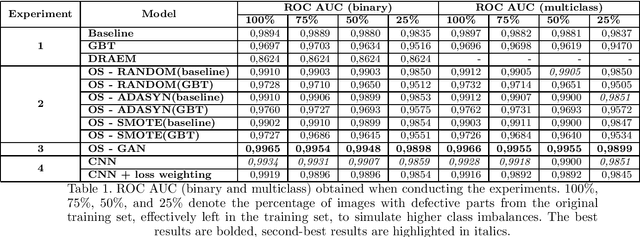
Abstract:Quality control is a crucial activity performed by manufacturing companies to ensure their products conform to the requirements and specifications. The introduction of artificial intelligence models enables to automate the visual quality inspection, speeding up the inspection process and ensuring all products are evaluated under the same criteria. In this research, we compare supervised and unsupervised defect detection techniques and explore data augmentation techniques to mitigate the data imbalance in the context of automated visual inspection. Furthermore, we use Generative Adversarial Networks for data augmentation to enhance the classifiers' discriminative performance. Our results show that state-of-the-art unsupervised defect detection does not match the performance of supervised models but can be used to reduce the labeling workload by more than 50%. Furthermore, the best classification performance was achieved considering GAN-based data generation with AUC ROC scores equal to or higher than 0,9898, even when increasing the dataset imbalance by leaving only 25\% of the images denoting defective products. We performed the research with real-world data provided by Philips Consumer Lifestyle BV.
Machine Beats Machine: Machine Learning Models to Defend Against Adversarial Attacks
Sep 28, 2022

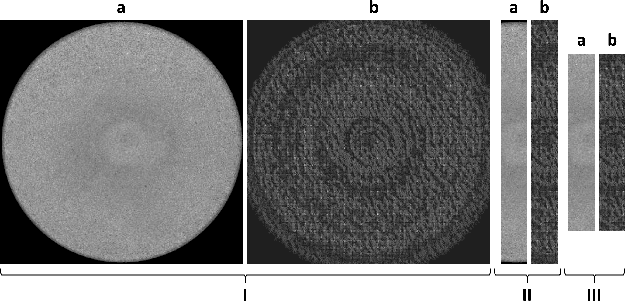

Abstract:We propose using a two-layered deployment of machine learning models to prevent adversarial attacks. The first layer determines whether the data was tampered, while the second layer solves a domain-specific problem. We explore three sets of features and three dataset variations to train machine learning models. Our results show clustering algorithms achieved promising results. In particular, we consider the best results were obtained by applying the DBSCAN algorithm to the structured structural similarity index measure computed between the images and a white reference image.
Forecasting Sensor Values in Waste-To-Fuel Plants: a Case Study
Sep 28, 2022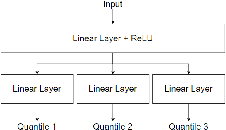
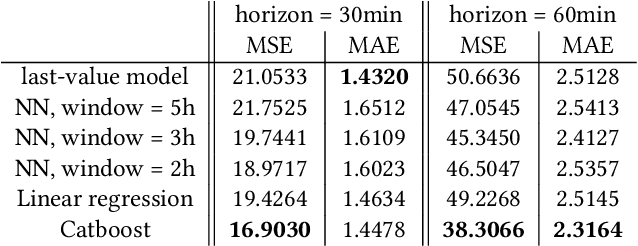
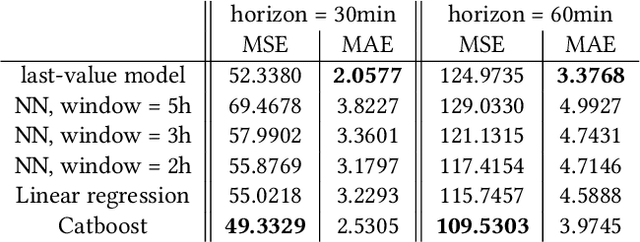
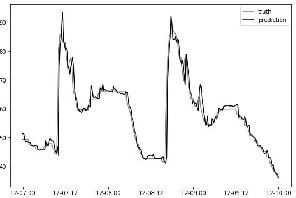
Abstract:In this research, we develop machine learning models to predict future sensor readings of a waste-to-fuel plant, which would enable proactive control of the plant's operations. We developed models that predict sensor readings for 30 and 60 minutes into the future. The models were trained using historical data, and predictions were made based on sensor readings taken at a specific time. We compare three types of models: (a) a n\"aive prediction that considers only the last predicted value, (b) neural networks that make predictions based on past sensor data (we consider different time window sizes for making a prediction), and (c) a gradient boosted tree regressor created with a set of features that we developed. We developed and tested our models on a real-world use case at a waste-to-fuel plant in Canada. We found that approach (c) provided the best results, while approach (b) provided mixed results and was not able to outperform the n\"aive consistently.
Active Learning and Approximate Model Calibration for Automated Visual Inspection in Manufacturing
Sep 12, 2022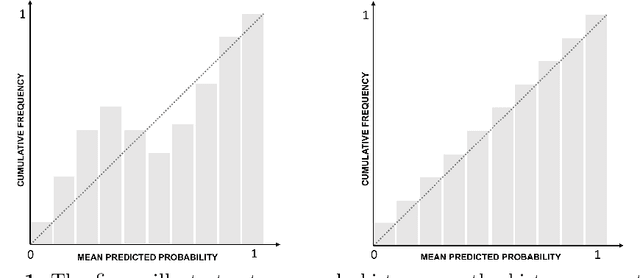

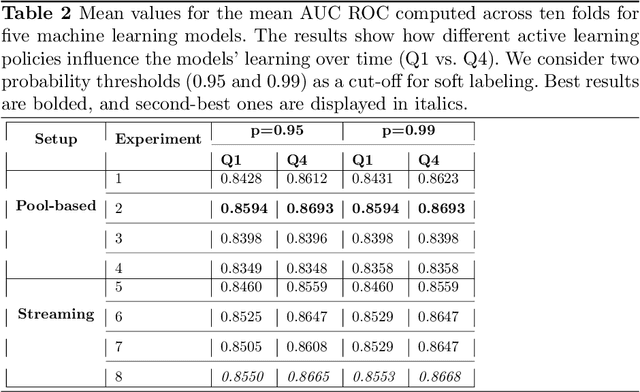

Abstract:Quality control is a crucial activity performed by manufacturing enterprises to ensure that their products meet quality standards and avoid potential damage to the brand's reputation. The decreased cost of sensors and connectivity enabled increasing digitalization of manufacturing. In addition, artificial intelligence enables higher degrees of automation, reducing overall costs and time required for defect inspection. This research compares three active learning approaches (with single and multiple oracles) to visual inspection. We propose a novel approach to probabilities calibration of classification models and two new metrics to assess the performance of the calibration without the need for ground truth. We performed experiments on real-world data provided by Philips Consumer Lifestyle BV. Our results show that explored active learning settings can reduce the data labeling effort by between three and four percent without detriment to the overall quality goals, considering a threshold of p=0.95. Furthermore, we show that the proposed metrics successfully capture relevant information otherwise available to metrics used up to date only through ground truth data. Therefore, the proposed metrics can be used to estimate the quality of models' probability calibration without committing to a labeling effort to obtain ground truth data.
Enriching Artificial Intelligence Explanations with Knowledge Fragments
Apr 12, 2022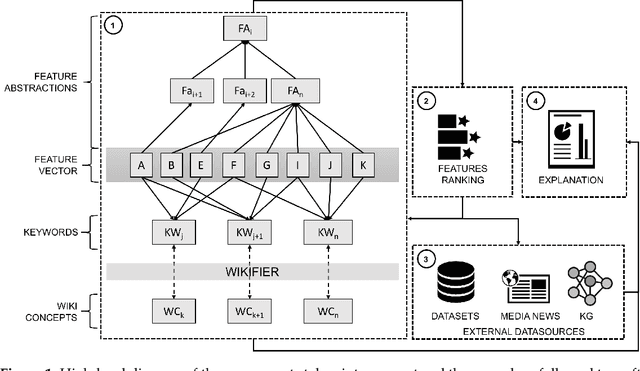
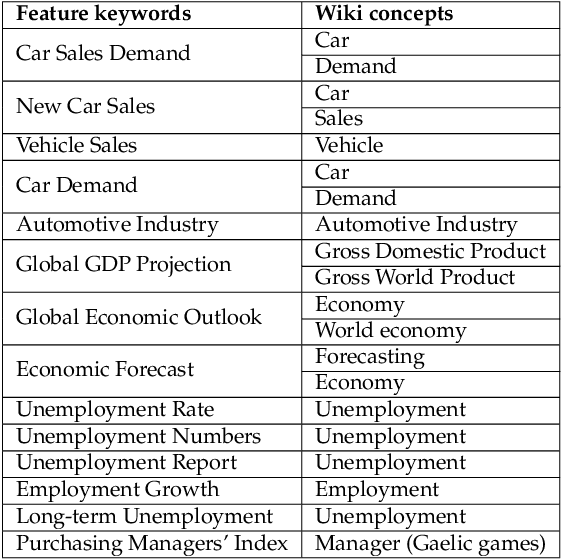
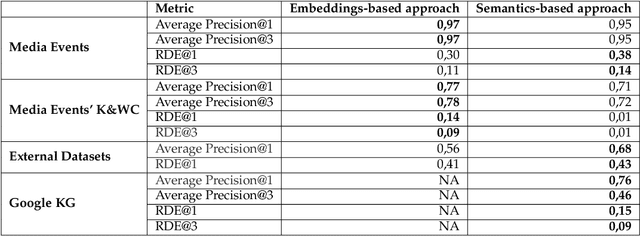
Abstract:Artificial Intelligence models are increasingly used in manufacturing to inform decision-making. Responsible decision-making requires accurate forecasts and an understanding of the models' behavior. Furthermore, the insights into models' rationale can be enriched with domain knowledge. This research builds explanations considering feature rankings for a particular forecast, enriching them with media news entries, datasets' metadata, and entries from the Google Knowledge Graph. We compare two approaches (embeddings-based and semantic-based) on a real-world use case regarding demand forecasting.
Human-Centric Artificial Intelligence Architecture for Industry 5.0 Applications
Mar 21, 2022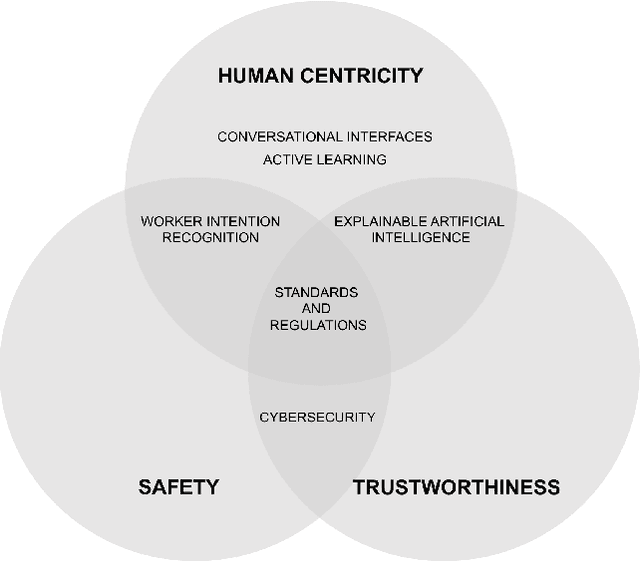
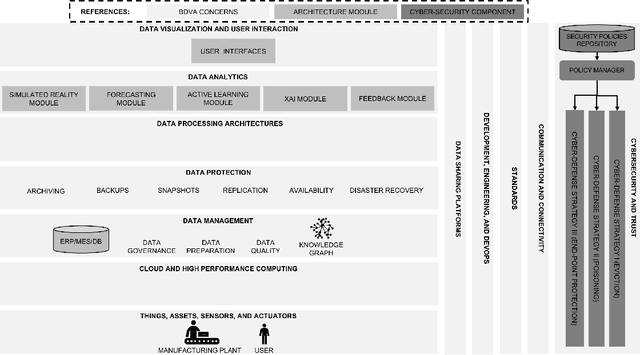
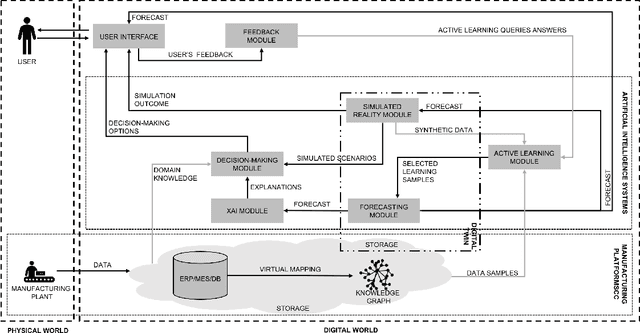

Abstract:Human-centricity is the core value behind the evolution of manufacturing towards Industry 5.0. Nevertheless, there is a lack of architecture that considers safety, trustworthiness, and human-centricity at its core. Therefore, we propose an architecture that integrates Artificial Intelligence (Active Learning, Forecasting, Explainable Artificial Intelligence), simulated reality, decision-making, and users' feedback, focusing on synergies between humans and machines. Furthermore, we align the proposed architecture with the Big Data Value Association Reference Architecture Model. Finally, we validate it on two use cases from real-world case studies.
Streaming Machine Learning and Online Active Learning for Automated Visual Inspection
Oct 15, 2021



Abstract:Quality control is a key activity performed by manufacturing companies to verify product conformance to the requirements and specifications. Standardized quality control ensures that all the products are evaluated under the same criteria. The decreased cost of sensors and connectivity enabled an increasing digitalization of manufacturing and provided greater data availability. Such data availability has spurred the development of artificial intelligence models, which allow higher degrees of automation and reduced bias when inspecting the products. Furthermore, the increased speed of inspection reduces overall costs and time required for defect inspection. In this research, we compare five streaming machine learning algorithms applied to visual defect inspection with real-world data provided by Philips Consumer Lifestyle BV. Furthermore, we compare them in a streaming active learning context, which reduces the data labeling effort in a real-world context. Our results show that active learning reduces the data labeling effort by almost 15% on average for the worst case, while keeping an acceptable classification performance. The use of machine learning models for automated visual inspection are expected to speed up the quality inspection up to 40%.
Active Learning for Automated Visual Inspection of Manufactured Products
Sep 06, 2021


Abstract:Quality control is a key activity performed by manufacturing enterprises to ensure products meet quality standards and avoid potential damage to the brand's reputation. The decreased cost of sensors and connectivity enabled an increasing digitalization of manufacturing. In addition, artificial intelligence enables higher degrees of automation, reducing overall costs and time required for defect inspection. In this research, we compare three active learning approaches and five machine learning algorithms applied to visual defect inspection with real-world data provided by Philips Consumer Lifestyle BV. Our results show that active learning reduces the data labeling effort without detriment to the models' performance.
 Add to Chrome
Add to Chrome Add to Firefox
Add to Firefox Add to Edge
Add to Edge